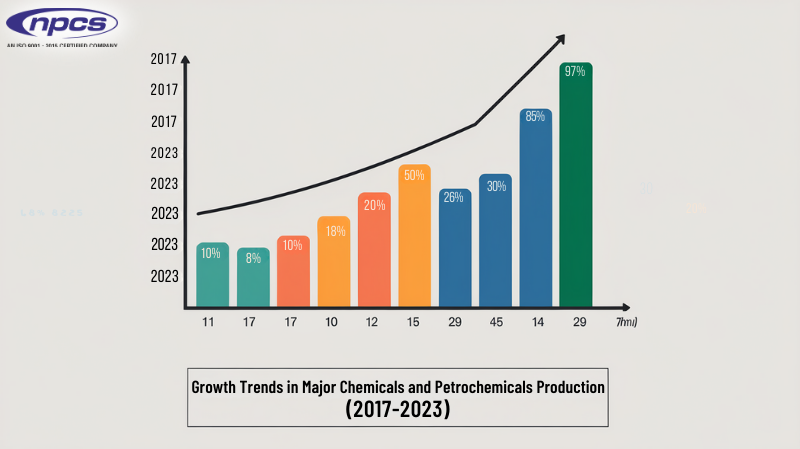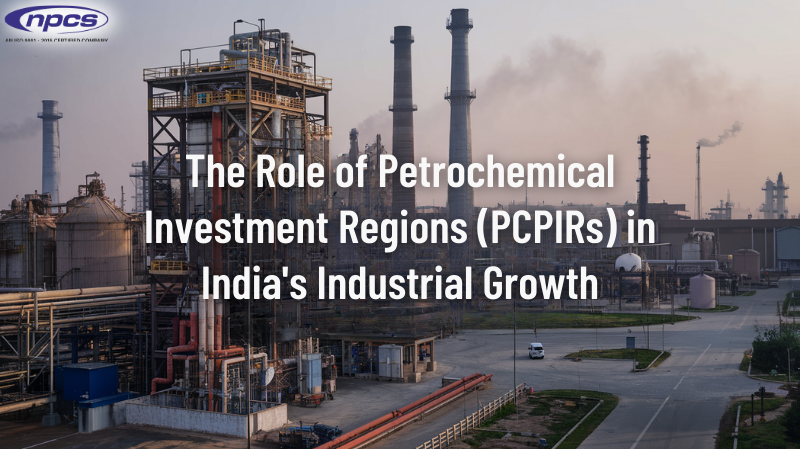India’s petrochemical sector is on a growth trajectory that has never been experienced before owing to a combination of government policies and effective public-private partnerships. These partnerships are crucial in attracting possible investors, developing modern infrastructures, increasing the production outlays, and encouraging the growth of the respective industries within the main petrochemical clusters of the country. The country, which aspires to be the global hub for chemicals and petrochemical industries, is also becoming the most important stakeholder in the realization of these public private partnerships.
The Role of Public-Private Partnerships in the Petrochemical Industry
Partnerships between the public and the private sectors (PPPs) are not necessarily new to the Indian industries especially in the cases of the petrochemicals . All these have been underpinned by the growth of publications, and globalization in the restructuring of business sectors. The chief benefit of these situations is the entry of private sectors PP All these agreements allow the private participants to join initiatives aimed at PP these PP conditions allow for and encourage. In Golcul Enterprises Incorporation the collaborative approach is widely practiced in the sectors where public goods are required.
One of the best ways to highlight the effectiveness of the public-private partnerships is the Petroleum, Chemical and Petrochemical Investment Regions (PCPIRs) initiative. The establishment of these zones is governed by a policy known as the PCPIR policy which was unveiled in the year 2007, and which is intended centered on PCPIR east promotes integrated development of the chemical and recombinant polypeptide industry in select regions of the country. The purpose of investment zones identified as PCPIRs is to stimulate local as well as foreign investments, enhance the petrochemical production capabilities and provision of superlative infrastructure. So far four PCPIRs have been sanctioned in the states of Gujarat, Andhra Pradesh, Odisha and Tamil Nadu.
PCPIRs: A Model for Growth
Gujarat PCPIR: A Success Story
The Dahej region of Gujarat has the potential to demonstrate how public and private partnerships can contribute to the speedy establishment of industries. Being one of the India’s largest and advanced petrochemical hubs, this region has received extensive investments in the development of the infrastructure and the industrial plants. The state government was key in building the critical foundations such as the roads, the water supply and the power distribution. More than Rs. 17,000 crores has been put into infrastructure development in Dahej area just.
The Gujarat PCPIR has a pivotal anchor investment by ONGC Petro Additions Ltd. (OPaL) Making an investment of over Rs 29500 crores, the dual feed cracker project of OPAL operationalized in 2017 is one of the biggest petrochemical complexes in the country. Built with an investment of Rs. 30, 826 crore, the complex boasts an ethylene production of 1.1 million tons and propylene production of 0.6 million tons every year. This large complex is capable of serving the domestic needs of the country as well as the export of the petrochemical products from India.
Paradip PCPIR: Odisha’s Petrochemical Hub
In Odisha, the Paradip PCPIR stands as another great model of a PCPIR concept when the government and the private parties cooperate fully. The Indian Oil Corporation (IOC) is the anchor tenant in this region with its oil refinery along with petrochemical production capacities processing out 15 millions metric tons per annum crude oil. This particular refinery also produces several adhesive petrochemicals such as the paraxylene, polypropylene, and many more high end chemicals. With the establishment of more downstream facilities, the overall investment outlay in this PCPIR is assessed to rise significantly as it has the potential to develop a well interconnected petrochemical producing industry in the region.
Other PCPIRs: Expanding the Scope
Besides Gujarat and Odisha, there are also PCPIRs being developed in Andhra Pradesh and Tamil Nadu. Such regions have a good investment climate for both domestic as well as international investors owing to the government initiatives and the entrepreneurship of the private sector. The overall investment potential in the four PCPIRs once they are fully constructed, is estimated to be Rs. 7.63 Lakh Crore. Already, more than Rs. 2.27 Lakh Crore has been put or pledged in these areas. Reflecting the increasing faith in the petrochemical Industry in India
Plastic Parks: Fostering Integrated Development
Another initiative that is aiding the growth of the petrochemical industry. Through the use of Public Private Partnerships is the Plastic Parks scheme. It aims to foster the development of integrated plastic parks in India. It is offered with a grant up to fifty percent of the project cost for this objective. The idea is to establish plastic parks which will enable a solvent network of several companies. So that business activities are carried out under one roof without the dependencies. On the other companies for infrastructure, technology and raw materials.
So far, ten plastic parks have been granted approval in several states such as Madhya Pradesh, Assam and Tamil Nadu. These parks will accommodate various plastic processing units such as the manufacturing, packaging as well as recycling of plastic. The Plastic Parks scheme is promoting integrated development which in turn is increasing the competitiveness of Indian plastics industry on the global arena and is contributing to the “Make in India” campaign.
Research and Innovation: The Centre of Excellence Program
To enhance the prospects of the petrochemical industry and its sustainable development. There is a need for research and development initiatives. In this regard, the government has put in place a program called the Centre of Excellence. It is intended to promote advanced research in the field of polymers. Under this program, the government has set up 13 polymer research centers in various academic institutions. These centers are neither basic nor pure research centers.
There is an increasing trust of the industry in enhancing the R&D activities taking place in these centers. Such that most of the research carried out in these centers is of societal use and can result in innovations. For instance, polymer technology innovations from these centers are allowing companies. To enhance product efficacy while lowering project costs and practicing green operations.
Attracting Investments: A Bright Future Ahead
The effects of PPPs on the petrochemicals sector in India can be seen. First of all, in the large number of investments that have started to pour in. Out of these investments, the total investment expected within the four approved PCPIRs is Rs. 7.63 lakh crore. Investment will also increase with the further development of PCPIRs, plastic parks, and research centers. Resulting in enlargement of the economic base of the region and creation of additional jobs in these projects.
Moreover, with India establishing itself firmly as a significant player in the international petrochemical market. It is unavoidable that PPPs will also bring foreign investments. There is a growing interest among international petrochemical players to the Indian market. It considering the favorable policies of the governments, availability of feed-stock and a huge market. This can potentially turn the country into a hub of petrochemical products.
Conclusion: The Power of Public-Private Collaboration
The trajectory of the petrochemical industry in India is emblematic of the ability of public-private partnerships. It bring about development, innovation and competitiveness. Initiatives such as PCPIRs , Plastic Parks and the Centre of Excellence programme. They are creating a conducive environment for petrochemicals in the country. It will help India cater to the local as well as the international market of petrochemical products.
As this sector keeps expanding, these partnerships will be instrumental in keeping a technological. Sustainable manufacturing and other competitiveness edge for the country. The government’s plan of making India one of the major chemical and petrochemical hubs in the world. It is coming to fruition more so because of the public private partnership. With the help of these joint collaborations, India is onlY marching towards having an absolute monopolistic competition in the petrochemical sector. With endless possibilities of growing in the trunk.






